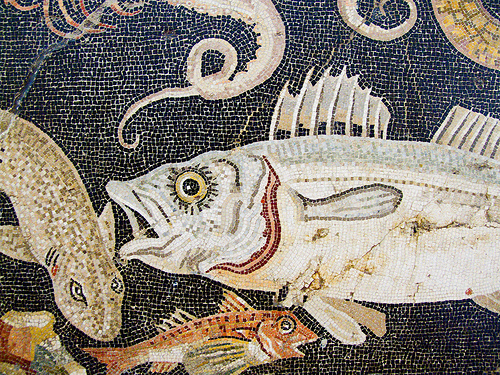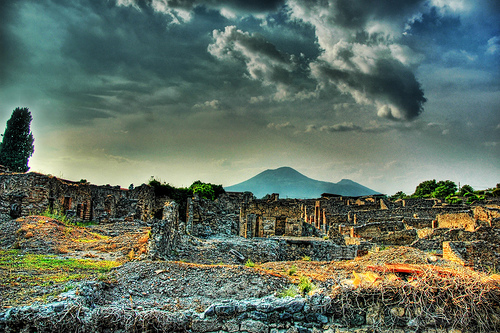One of the most incredible sights in my life was watching angry red streaks of lava etch the side of Mount Etna. I was on my way to the Catania airport during a vicious rainstorm. As the lightning crackled through the dark sky and the burning streams pulsated, the laconic driver assured me in typical Sicilian fashion – “c’è normale” – that’s nothing, it’s normal, it isn’t even a “real” eruption. My heart was racing even though I was safely miles away from the volcano, so awesome was the power of nature.
So I can only imagine how more horrifying the power of Mount Vesuvius was when it erupted in AD 79. But the people of the Bay of Naples still live under its threat, no doubt echoing their Sicilian counterparts in thinking, “c’è normale,” even with the ruins of Pompeii and Herculaneum close by to remind them. Pompeii and the Roman Villa: Art and Culture Around the Bay of Naples, at the National Gallery of Art, cleverly lulls you into a similar state of complacency. The exhibit first highlights the decorative art of Pompeii and the surrounding area, taking you through the various rooms and courtyards of a typical villa of the Roman Empire. Only at the end are you hit with a dark room and depictions of volcanic explosions, a haunting evocation of “La Civita” – the lost ancient city.
If you are looking for an in-depth exhibit on the eruption and the excavations that unearthed Pompeii, however, this isn’t it. Instead, it aims to educate the viewer subtly on the decorative arts that adorned the pleasure palaces of the rich. It’s a quietly haunting way to bring their lives back. Busts of the imperial family, including the usual suspects of Augustus, Livia, Caligula and Nero, are on display, as are gorgeous mosaics and frescoes, still lifes showing the bounty of the sea and land that groaned on Roman tables. One of the most impressive recreated rooms is a triclinium, or dining room, its lurid red walls depicting Apollo and the Muses. I could imagine many a fun party there, guests raising drinking vessels like the silver kantharos, intricately entwined with olive branches.
But I think my favorite piece was the stunning bronze statue of a girl fastening her dress. It seemed austerely modern, powerful in its simplicity, the living eyes a real shock and impossible to look away from. Somehow it made me think of every girl the morning of that day, quietly dressing, with no idea of the horror to follow.
National Gallery of Art
401 Constitution Ave NW
Washington, DC 20565
202.842.6511
East Building Mezzanine
Through March 22, 2009




I definitely want to check this out, as well as the real Pompeii!
I checked this out a few weekends ago. It’s a really, really, interesting exhibit.
There’s a tour guide, slightly overweight guy with a booming voice that absolutely made the trip worth it.